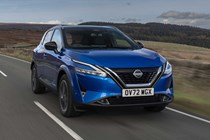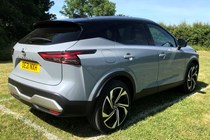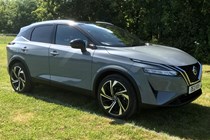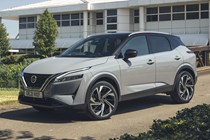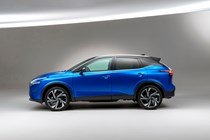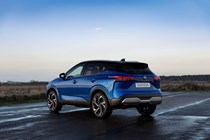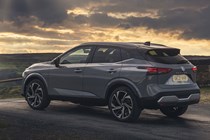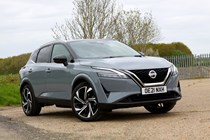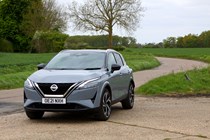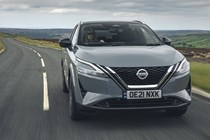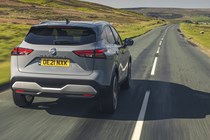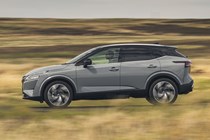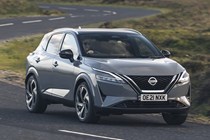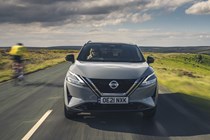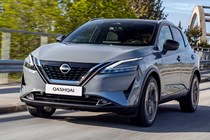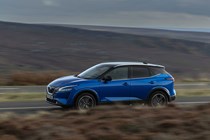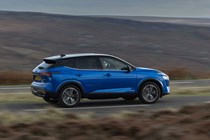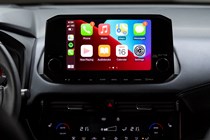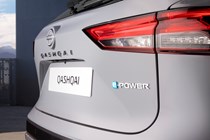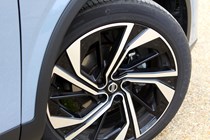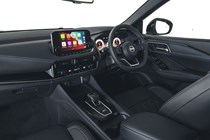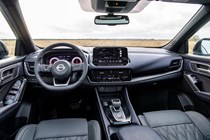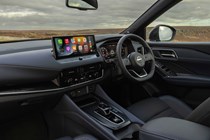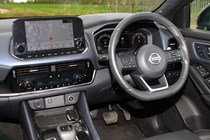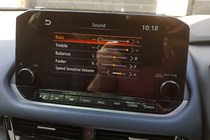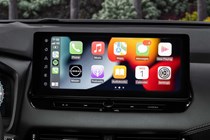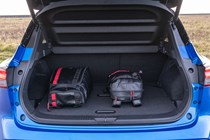
Nissan Qashqai running costs and reliability

Miles per pound (mpp) ⓘ
| Petrol engines | 5.9 - 6.6 mpp |
|---|---|
| Hybrid petrol engines | 7.5 - 8.0 mpp |
Fuel economy ⓘ
| Petrol engines | 39.9 - 44.9 mpg |
|---|---|
| Hybrid petrol engines | 51.4 - 54.3 mpg |
- Choice of mild-hybrid and full-hybrid
- Full e-Power hybrid isn’t massively efficient
- Reliability issues of previous Qashqai addressed
According to ‘real world’ WLTP testing, the 1.3-litre four-cylinder petrol engine with mild-hybrid assistance offers very similar fuel economy and CO2 emissions, regardless of whether you have it with 140hp or 158hp. Nissan claims around 45mpg and CO2 emissions between 141-145g/km. The optional all-wheel-drive setup available on the 158hp model will use more fuel, with claimed economy figures of 40.9mpg and 155g/km CO2 emissions.
We spent a week behind the wheel of a Nissan Qashqai Tekna+ automatic in 158hp form and averaged a very impressive 47.1mpg on a mixture of fast A-road and motorway driving, with a little urban thrown in for measure. That’s better than the combined official figure and it was easily achieved too.
CO2 emissions for the E-Power hybrid are a low 119g/km. It has a claimed average economy of 52.3-53.3mpg. Though this hybrid model is noticeably more frugal around town where the electric-driving ability is more pronounced, during a combination of driving we didn’t find it to be hardly any more efficient than the standard mild-hybrid car.
Servicing and warranty
Service intervals are once a year or every 18,000 miles, though e-Power hybrid models require more regular servicing – every 9,000 miles. There are service plans available for those who want to pay for their servicing on a monthly plan – thus avoiding big bills – and given underlying inflation rates, this is a deal we’ll always recommend.
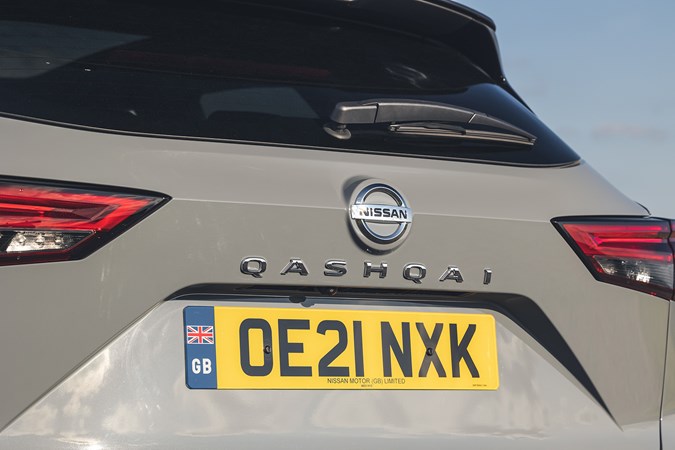
New Nissan cars come with a three-year, 60,000-mile warranty, which lags behind the five years you get with a Hyundai (and with unlimited mileage), as well as the seven-year, 100,000-mile warranty that Kia provides.
Reliability
- Established tech
- Qashqai is a reliable choice
- No diesel complexities
The Nissan Qashqai’s reputation for reliability is well-known and helps explain its popularity. But it’s not been without its issues – the old model had some problems with its diesel versions, as well as some gearbox traumas which has eroded buyer confidence in these cars.
That won’t worry buyers of this one – the diesels have been dropped and the automatic transmission has been replaced by an all-new one.
There has only been one significant recall on the new Qashqai so far relating to the steering wheel, which may falsely detect that the driver has their hands on the wheel when the ProPilot driver assistance feature is activated – a legal requirement. It affected around 10,000 cars built in 2021. Based on owners reviews section of the site, the new Qashqai is rated with a fairly middling 3.8 stars out of five.
Ongoing running costs
| Road tax | £180 - £600 |
|---|---|
| Insurance group | 11 - 26 |
Get an insurance quote with

|
|


